7 Digital PR ideation techniques to spark your creativity
Let’s face it, ideation is hard. If you’ve been working on the same brand for a long time, it can be tricky to come up with something new and exciting, that is still on brand and meets all your objectives. If you’re stuck in a brainstorm rut, we’ve compiled some of our top toolbox techniques for generating fresh and engaging digital PR campaigns.
For getting going
1. What If..
The “what if” game is a good way to kickstart off-the-wall ideas by thinking of the most extreme scenarios. It’s a great way to get people thinking instead of starting with a narrow scope which can lead to narrow ideas. Questions can be on anything around the brief, to the product, or campaign execution. Everyone takes turns asking “what if” questions like:
-
- What if this product solved a worldwide problem?
- What if budget was no object?
- What if we had to pitch something to press by the end of the day?
- What if Boris Johnson was designing this campaign?
- What if this story was the most expensive, the ugliest, the world’s first?
Thinking of extreme scenarios is essentially a good way of generating ideas with press appeal as journalists look for those out of the ordinary, “man bites dog” stories.
2. Emotional Lucky Dip
We naturally start ideating with results in mind. Whilst a sensible approach, it can sometimes limit creativity. For example, you may be so focused on hitting marketing metrics, like links or coverage, that you avoid talking about ideas that really engage your audience and lead to actual conversions. Try starting with emotions in mind rather than results. What emotion do you want people to feel having seen your campaign? Fill a bowl with emotional word prompts like “happy”, “empathetic”, “inspired”, “determined”. Pick out a prompt and discuss what type of content would make your audience feel that feeling.

For idea expansion
3. Brain Building
You may have a shortlist of ideas with potential, or even ideas that you think won’t work, but don’t put them in the bin just yet! Brain building encourages people to expand on these ideas without the pressure of trying to secure enough airtime in the brainstorm session. The brainstorm team each write down the top-level concept on a piece of paper, then everyone passes their paper to next person to expand or improve upon their idea. Not only is it a much quicker way to build on ideas than letting everyone speak one idea at a time, it’s also a great way to ensure quieter members of the group have a chance to contribute.
4. Asset Mapping
Similar to the “what if” game but focusing solely on the asset itself. If you’ve already discussed a data-led campaign and a table of results, you might want to start challenging the physical assets themselves. What if instead of a table it was an interactive heat map, an educational video, a calculator tool, etc.? How would it change the impact of our campaign? It’s a great way to discuss the strength of your assets, what is most likely to engage your audience, and what is going to encourage publishers to link back to your site.
5. The Reangling Matrix
If you really want to maximise the reach and digital value of your campaign idea, put it through a reangling matrix. This table prompts you to think of additional story angles you may not have considered. Is there a technical angle, human interest story, lifestyle angle, does it help people drive efficiency, save money, do something faster, become more sustainable? These additional story angles open your campaign up to multiple publisher niches which means you can tailor your press releases to ensure you maximise the pickup and success of your campaign. The other part of this matrix looks at how you can add the cherry on top by prompting you to think about topical, celebrity, sporting, historical, weather reference, or geographical/animal analogies. This helps your campaigns stand out from the crowd and help journalists visualise the appeal of your campaign.
For idea qualification
6. The STEPPS Heptagon
An oldy, but still a goody! The STEPPS Heptagon is a great way to qualify the strength of your campaign idea by looking at how it appeals to the public and your audience. You start by scoring your campaign idea against six key areas to assess how ‘contagious’ your content is likely to be:
- Social Currency: Does your campaign have shareability? Would people want to share it on their social media because it helps them portray the image they want, online?
- Triggers: What is going on already that means your campaign will be front of mind? Is the cost of living going to continue to be talked about and trigger people to think about your cost-saving campaign?
- Emotion: Does your campaign pull at the heartstrings or evoke a passionate response? The more we care, the more we share, giving your campaign a natural virality.
- Public: How public is your campaign? Is it in the public interest? People will be more likely to engage and imitate the more public it is.
- Practical: Does it provide your audience a practical value? Are you solving a problem? The most useful things get shared.
- Stories: There’s a reason storytelling has been around for millennia, because good stories help information travel.

7. The Golden Gannt
A quick way to identify the most powerful ideas is to assess them against the Golden Gannt. Which ideas satisfy all three areas of the Gannt chart?
- Does your campaign appeal to publishers where you audience is active online?
- Does your campaign have strong enough linkable assets to encourage placement on these publishers and close link gaps?
- Does your campaign appeal to catalyst publishers that will naturally boost reach and pick up?
If you can hit all three of these, there’s a good chance your campaign idea is a good one.
Takeaway tips for an effective brainstorm session
- Set a clear brief: Set smart goals and objectives at least a week in advance of the session and include all relevant info in the meeting invite. Include information on business background and what kind of ideas you are most likely to sign off.
- Don’t dismiss the chaff: For true unbridled creativity, teams need to feel confident they can share anything in their heads. Making time for “idea poo” means that there’s no such thing as a bad idea, and that’s often how you discover idea gold, by building on a half-baked thought.
- Cast a wider net: Think beyond your marketing or digital teams for brainstorms. There is a wealth of knowledge about your brand across the company. Invite people from HR, finance, senior leadership, sale, and continue to mix up the brainstorms each time.
- Give fair airtime: Not everyone is confident enough to speak up in brainstorms, even when they have the knowledge and creativity to share some great ideas. Make time for introverts and theorists by avoiding an imbalance in debate and making sure everyone has a chance to speak.
- Give feedback: Feedback loops during and after brainstorming are essential. Always explain why you decide not to go with a particular idea so that teams bring even stronger ideas next time.
- Vote on it: If you want a campaign to succeed you need to make sure everyone involved in executing it is bought into the idea. But make sure those qualifying out ideas have the knowledge to know what works and doesn’t.
Are you struggling to generate stand-out creative digital PR campaigns? If so, speak to our team today about how you can breathe new life into your concepts.
About the author: Kira is Head of Digital PR at CreativeRace. She specialises in digital PR and content marketing strategy to drive powerful media coverage, high authority link acquisition, relevant traffic and engagement. Kira is a previous winner of Best Website at the BBC Journalism Awards.

























